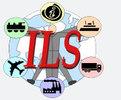
ILS 2012
Québec, Canada, 26 — 29 August 2012
ILS 2012
Québec, Canada, 26 — 29 August 2012

THEMATIC SESSION:The Future Supply Chain: Beyond Out-of-the-Box Thinking + REGULAR SESSION: Facility Layout
Aug 27, 2012 04:30 PM – 06:00 PM
Location: VCH-2880
Chaired by Cecilia Temponi
4 Presentations
-
 04:30 PM - 04:52 PM
04:30 PM - 04:52 PMOnline Government Services: The Benefits for Operations of Small and Medium-Sized Businesses in Québec
Online government services enable businesses to broaden their operations and increase their productivity. The competitive advantage generated by these services is linked to recently developed products, know-how, and ability to meet customer needs. The purpose of this paper is to analyze the role of online government services in the development of small and medium-sized businesses (SMBs) in the context of the strong growth in online services that government bodies and institutions have made available to businesses. Specifically, this paper examines the extent to which the use of online government services affects SMB operations.
-
 04:52 PM - 05:14 PM
04:52 PM - 05:14 PMAn Overview of DDSN and the Internal/External Customers
The focus of this research is to develop a framework that organizes the literature in a structure that might facilitate better understanding and analysis of Demand Driven Supply Networks (DDSN) with a focus on the interactions and relationships that internal and external customers have on DDSN. We use archived literature to develop the proposed framework. The proposed DDSN framework is categorized into four broad categories: Concept development, Organization, Buyer/ Supplier Performance management, and Shared elements. Each broad category was conceptualized as a subcomponent with relevant issues. Each subcomponent has multidirectional interconnections. Our findings indicate that customers, both internal and external, have considerable influence in shaping the DDSN in an organization. Their collaboration and sharing of information becomes the drivers for the development of DDSN. Current underlying assumptions and claims in the literature about inter-relationships with the organization’s customers ought to be re-evaluated and researched. Future research should emphasize metrics development and empirical studies.
-
 05:14 PM - 05:36 PM
05:14 PM - 05:36 PMA Non-linear Threshold Accepting Algorithm for the Facility Layout Problem
This paper proposes a simple but effective modification of the conventional threshold acceptance algorithm to solve the static and dynamic facility layout problems. The main difference between the proposed and the existing algorithms resides in the mechanism of accepting or rejecting the candidate solution from the neighbourhood. In the proposed variant, the acceptance rule is non-linear. This acceptance rule is inspired from the RC-filter which is a lowpass filter used in electronics to reduce the amplitude of signals with higher frequencies. We conduct a computational study to difficult instances taken from the litterature. The results presented show that this algorithm performs very well compared to other methods proposed in the literature.
-
 05:36 PM - 05:58 PM
05:36 PM - 05:58 PMA Guideline for Occupational Health and Safety Considerations in Facilities Planning
Facilities layout planning is fast becoming the compliance for the organizations. In the past two decades, researchers have developed simulation and mathematical programming models to estimate the performance measures of a production system. However, the considerations of occupational health and safety management have been overlooked. The objective of this work is to develop a comprehensive list of safety criteria which facility managers need to consider at the early stages of the plant design in order to improve occupational health and safety. These criteria, which are based on previous research as well as the safety guidelines and standards, provide a tool for anticipating hazardous situations and instructing the improvements to reduce the occupational accidents. Furthermore, a structured safety outline for facilities planning will prevent future potential layout modifications for safety reasons and consequently reduce costs.